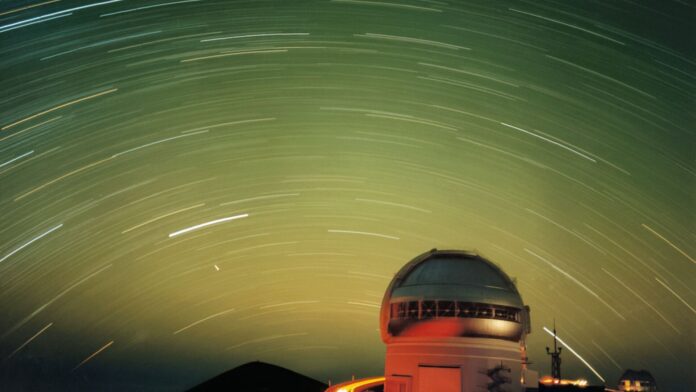A breathtaking photograph of the night sky above Mauna Kea in Hawaii captures not only the ethereal trails of stars but also a growing concern for astronomers worldwide – the increasing number of satellite streaks disrupting ground-based observations. Taken from atop Mauna Kea, home to the Gemini North Observatory, the image showcases the majestic arcs of starlight created by Earth’s rotation. Yet, woven into this cosmic tapestry are numerous brighter streaks, testament to the burgeoning network of satellites orbiting our planet.
The Gemini North Observatory itself plays a crucial role in exploring the universe’s mysteries. As part of the international Gemini Observatory – with its sister telescope in Chile – it has made significant contributions to understanding exoplanets, black holes, and the dawn of the cosmos.
But this striking image highlights an unwelcome byproduct of technological advancement: satellite megaconstellations are becoming a major obstacle for astronomers seeking clear views of the night sky. These constellations, launched for purposes ranging from communication to Earth observation, crisscross low Earth orbit at increasing density. While these endeavors offer valuable services, their impact on astronomical research is undeniable and increasingly problematic.
For researchers relying on telescopes like Gemini North, satellite streaks can be akin to unwanted graffiti marring a priceless canvas. These streaks interfere with sensitive measurements of faint celestial objects, blurring the fine detail astronomers need to unravel cosmic secrets. The brighter satellites cast “glare” that overwhelms detectors designed for observing distant galaxies and nebulae millions of light-years away.
This challenge is pushing the astronomical community towards creative solutions. Some proposed techniques include developing sophisticated image processing algorithms to eliminate streaks in post-processing, optimizing telescope designs to better manage stray light, and advocating for regulations that ensure responsible satellite deployment practices.
The celestial wonders captured in this photograph serve as a poignant reminder of both the awe-inspiring vastness of the universe and the growing footprint of human technology on its exploration. As we strive to unravel the cosmos’ secrets, finding a harmonious balance between technological progress and the preservation of pristine astronomical observations remains paramount.
